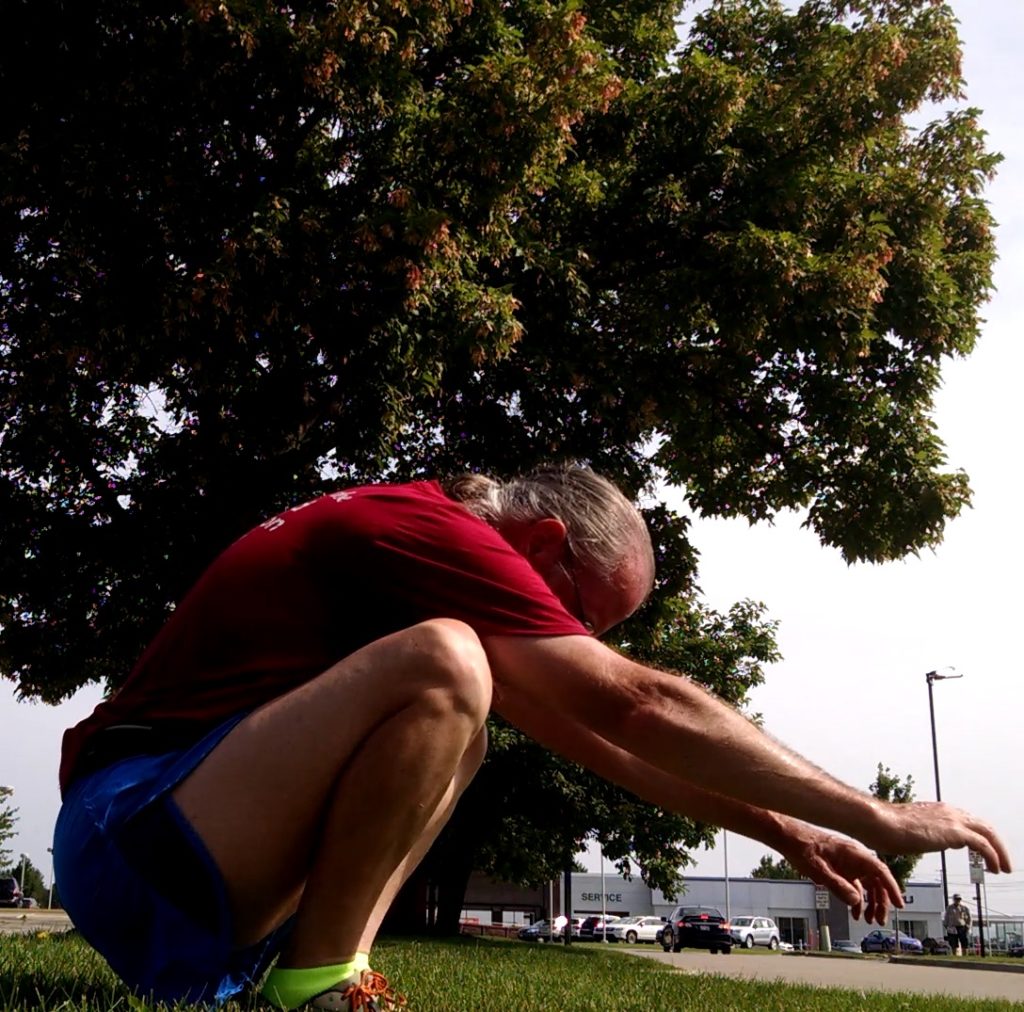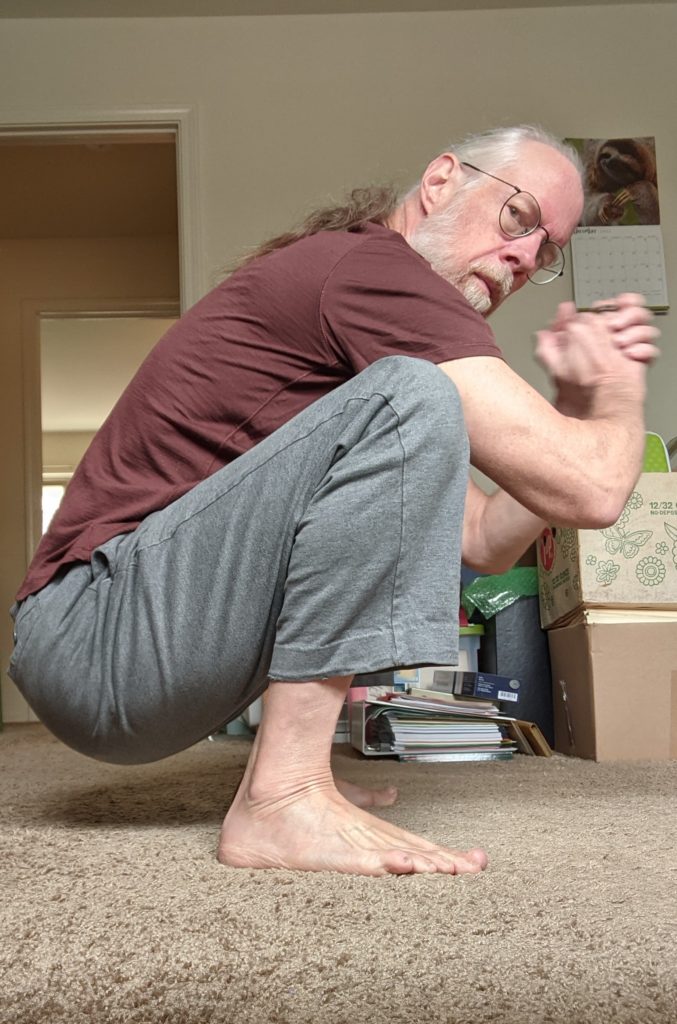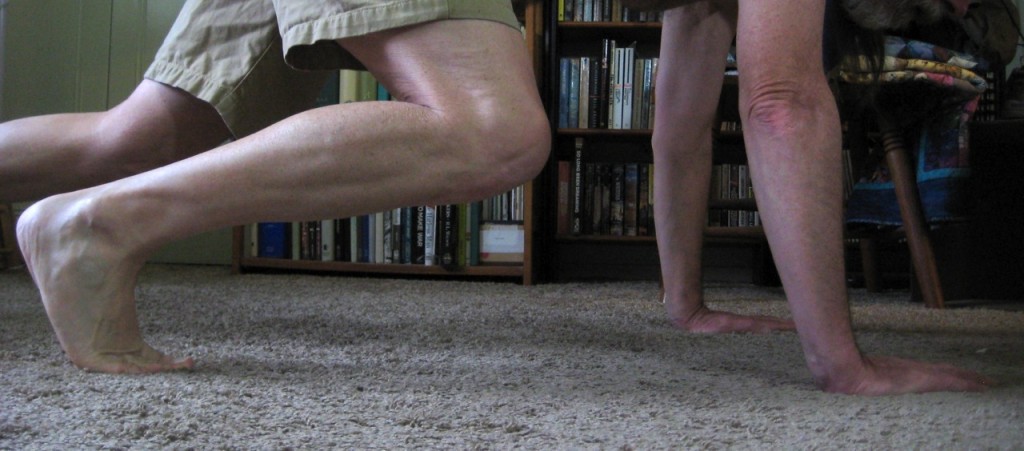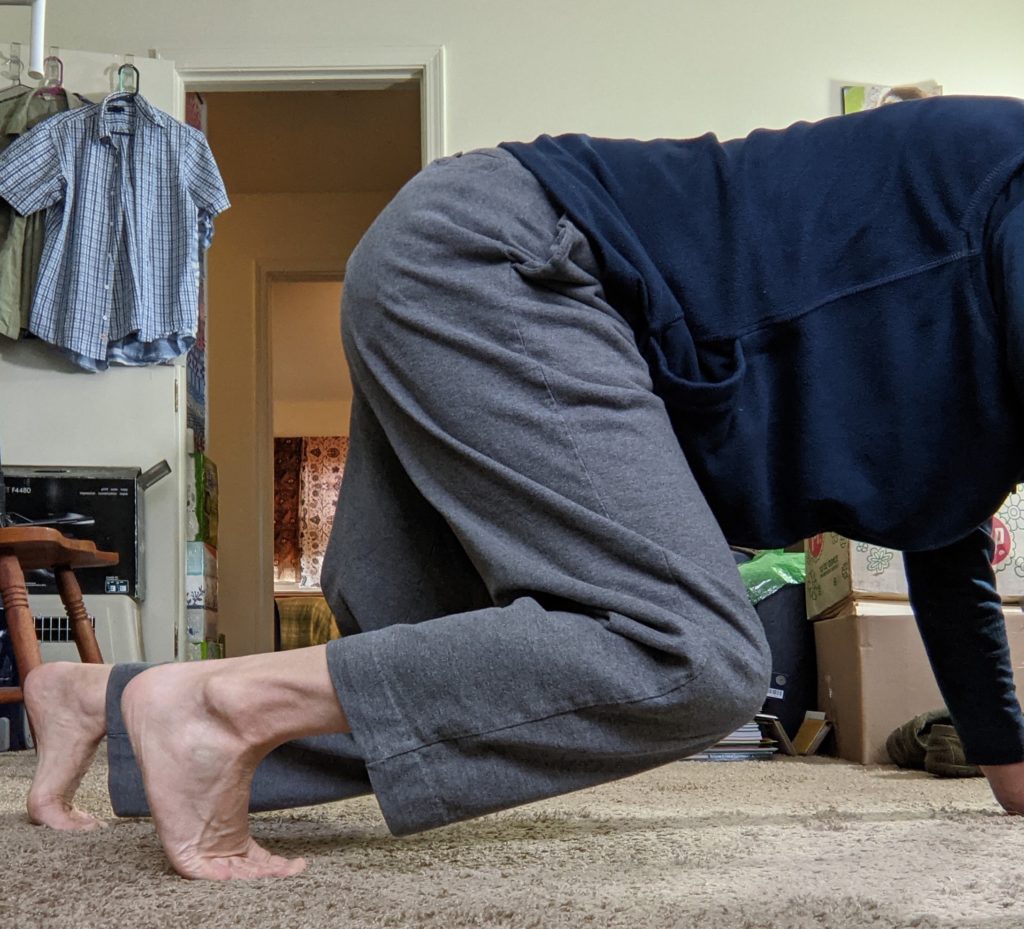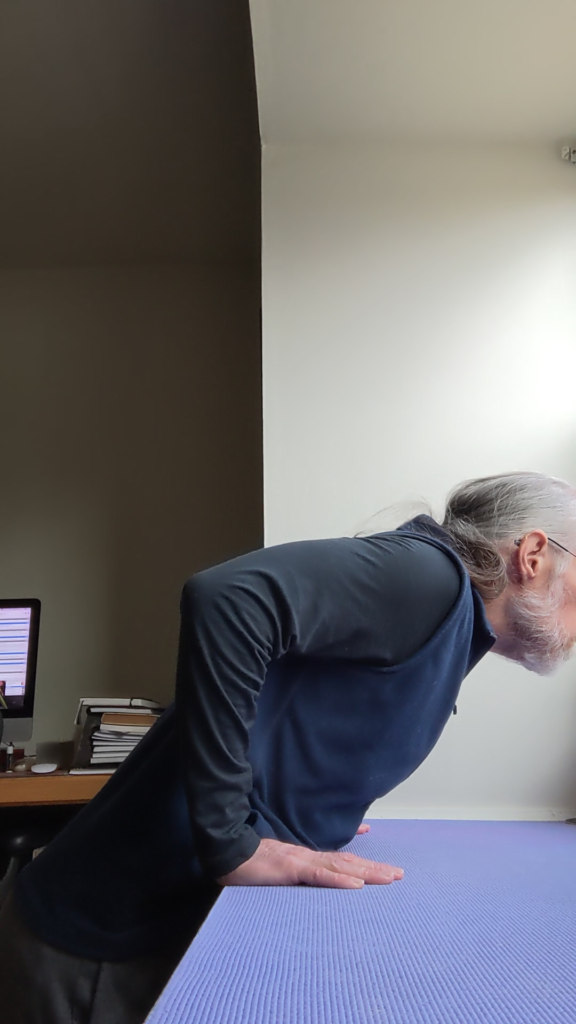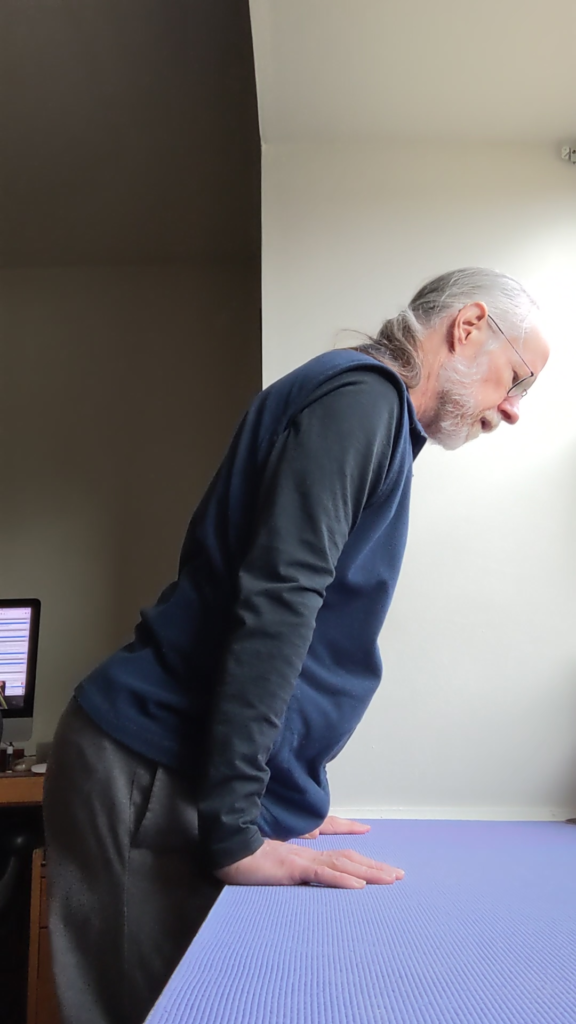Trying to think of something nice to say about 2020, I’m tempted to go with, “For introverts the pluses very nearly outweighed the minuses.” But I realize I’m speaking from a position of great privilege. Deepest sympathies for everyone who lost loved ones, jobs, income, homes, health, or peace of mind.
2020-12-27 13:22
I found a chest-high wall here in Savoy! It’s a retaining wall along a path I must have run down dozens of times, but it had never occurred to me before that I could use it to practice a parkour top-out. 🏃🏻♂️
Five years of parkour strength training
Five years ago made a plan to spend the winter trying to build the strength I thought I’d need in order to be successful at (and enjoy) training for parkour. To keep the whole thing manageable, I chose just four specific exercises to work on. And to keep myself accountable, I described a “success” condition to let me know if I had accomplished each one. (I documented my plan here: strength training specifically for parkour.)
I wasn’t successful at meeting most of those goals after that first winter, which was discouraging, and I kind of quit tracking my progress on those metrics after that. But in my preparations for writing my “Movement in 2020” post, I happened upon that post—and was surprised to see that I had pretty much accomplished it!
Squatting
Squatting is an important transitional posture, into and out of ground movement, and into and out of jumps. (It’s also a basic human capability, but one that requires a degree of strength and flexibility that most westerners no longer have.)
Five years ago I could only just barely squat, and then only when nicely warmed up. Since then I have worked on my squat in a dozen different ways—working on ankle mobility, hip mobility, and strength up and down the posterior chain.
My original benchmark was:
Success will be when I can get all the way down with a straight back, and then use my hands to manipulate things that are nearby.
I can report a considerable degree of success! I can get down into a deep squat, and I can linger there for tens of seconds at a time. I’m now working on improving my mobility while in a squat (looking to each side, up and down, reaching up and down, etc.).
Here’s where I was back then, and where I am now:
Toe Stretches
Early on my efforts to get better at various natural movements were significantly hindered by a lack of toe flexibility. My toes literally did not bend back at all.
This was actually a long-standing problem. At least as far back as college my martial arts instructors warned that I needed to pull my toes back or I’d hurt myself if I executed the kicks I was learning. But none of my martial arts instructors had even the tiniest bit of advice on how I might acquire the capability to pull my toes back.
Five years ago I came up with my own idea. I’d get into quadruped position while keeping my weight back on the balls of my feet (meaning that my knees had to be rather higher than ideal), then I gently worked to lower my knees toward the floor. That helped me make some progress.
A couple of years later, Ashley Price suggested an excellent exercise involving using a half-dome to let me gently flex my toes back. I’ve been doing that exercise almost daily since then.
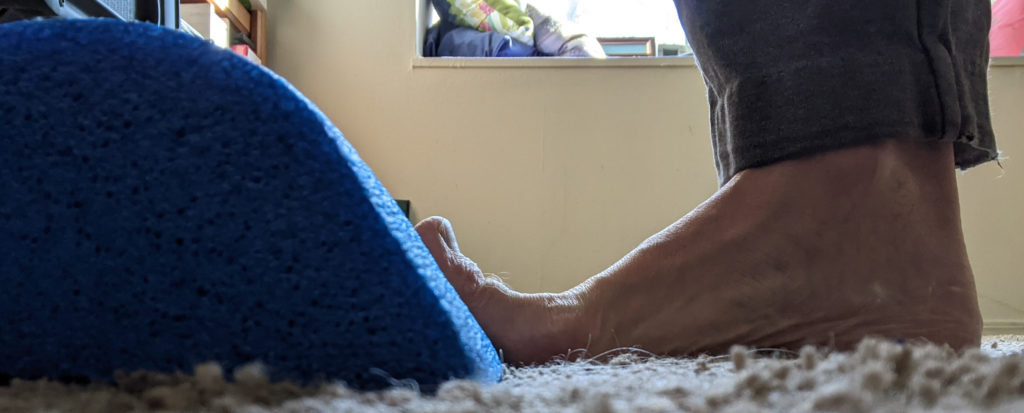
My original benchmark was:
Success will be when I can keep my weight back on the balls of my feet and still get into position for things like planks, push-ups, and lunges.
On that I can report complete success. The only thing that still eludes me is the quasi-martial arts move where you sit seiza (kneeling with the tops of your feet on the floor) then pull your toes back and tuck them under, shift your weight to the balls of your feet, rock back into a squat from which you can stand up. This is useful if you want to move from kneeling to standing while simultaneously drawing a sword, but is perhaps not particularly important beyond that.
Hanging
The ability to hang by your hands is crucial for many parkour moves.
Hanging was one of the things I worked on early, and made quite a bit of progress at, working up to being able to hang for a minute no problem. At about the same time I briefly managed to do a chin-up. But until this year I hadn’t done a pull-up since I was in elementary school.
Since I redoubled my efforts on pull-ups back in April or so, I’d largely quit working on hanging endurance, and it has somewhat slipped away—I can do 30 seconds, but a recent attempt at a full minute fell short. Similarly, although I can hang briefly from one hand, I can’t do what I could do a few years ago.
My original benchmark was:
Success will be a single pull-up in good form from a dead hang.
And at that I have succeeded! I can do a pull-up! In fact, on a good day I can do pull-ups in sets of three. Even on a less-good day, I can manage three sets of one pull-up.
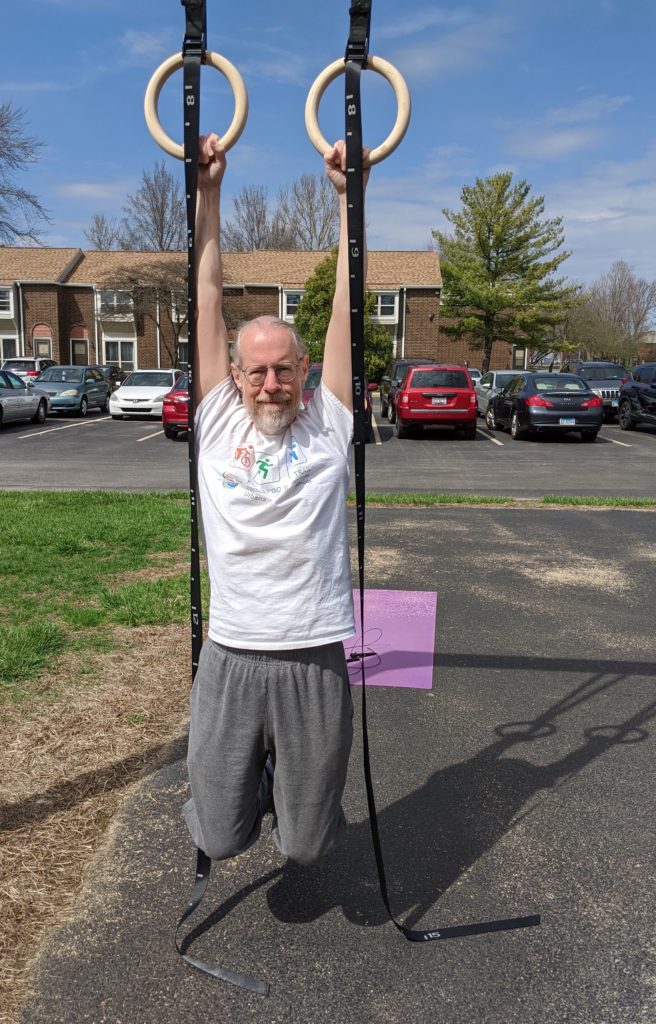
Wall Dip
The wall dip is another foundational move for parkour. You use it to get on top of a wall or other structure.
The village where I live seems to have a terrible dearth of chest-high walls (unlike campus, which has lots), so it has been persistently difficult to get in the practice I need, and doubly so during the pandemic.
What I’ve been doing instead this year are ring dips.
Ring dips are actually much harder than wall dips, because the rings are unstable, so you have to stabilize them yourself. As I sat down to write this, I was worried that the limitations of those stabilizing muscles might have kept me from fully training the pushing muscles for the dip itself.
So over the last few days I’ve checked for that, using the edge of my window seat as a wall for practice. (It’s not perfect, because it’s too low, so I have to tuck my legs back to keep my feet off the floor. That configuration doesn’t precisely match the way you’d do a wall dip in parkour, but it does let me fully test the basic pushing motion.)
My original benchmark was:
Success will be when I can do a dozen or so wall dips with good form.
On three different occasions this week I’ve done at least a dozen wall dips, so I can call that one accomplished as well.
Assuming I can keep it together to do at least some maintenance training during the winter, I can enter the spring with a solid base on which to pick up my parkour training!
Views from a run (with Bald Eagle) 🏃🏻♂️

This is the first decision point on my runs. If it’s going to be a short run, I go right. Today was a long run, so I went left.

Less than a mile further along. I’m always a little surprised by the people who would rather see a blank wall than a wonderful footpath.

About the mid-point of today’s run, my longest of the season.

The immature Bald Eagles I’ve been seeing occasionally the last couple of years are all grown up!

Depending on how far I want to run, I can choose any of several routes through or past Burwash Park. Whichever I take, by the time I get here I’m about 1 mile from home.
2020-12-12 05:51
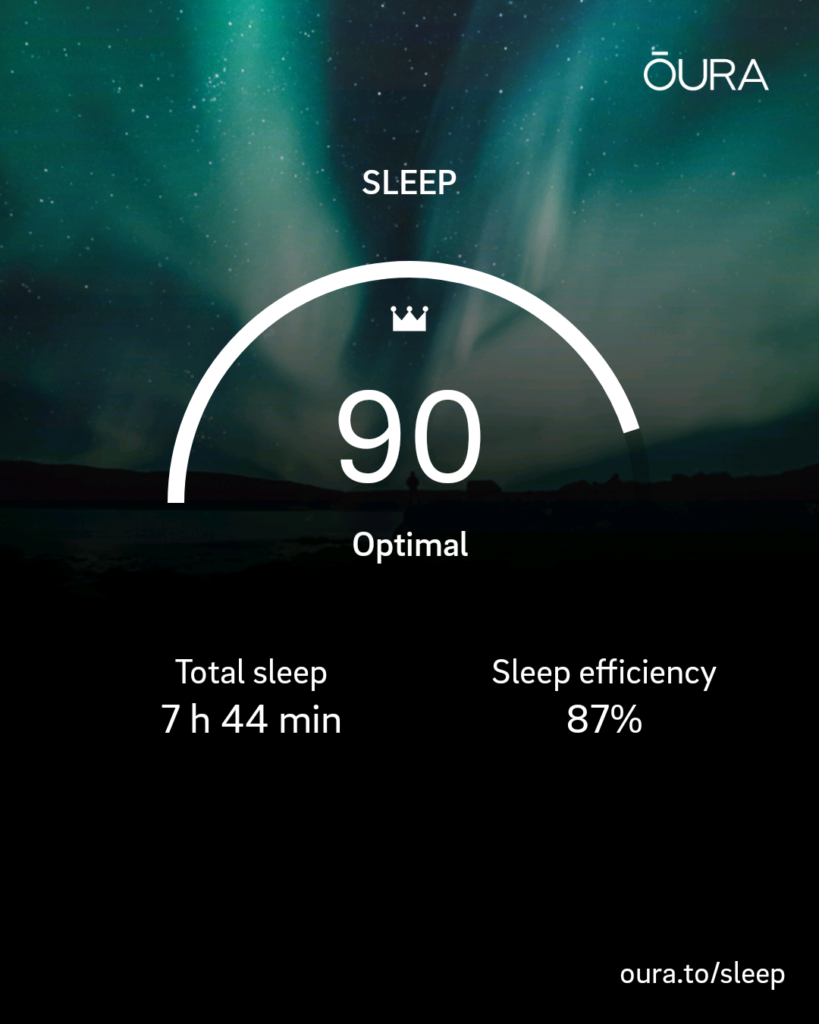
After a couple of nights of poor sleep mid-week due to stress, I’ve now had a couple of nights of good sleep, including last night.
2020-12-11 11:00
Isn’t this a great line?
“The floor is a hard, unforgiving taskmaster. But the floor never hits you – you hit the floor.”
Source: Put in the Groundwork
2020-12-11 09:56
The study reported in Exercise for Weight Loss (NYT) implicitly recommends an amount of exercise that is almost precisely I was doing in 2012 when I found a fitness regimen that worked for me.
“In the study, that meant working out six days a week for up to an hour, or around 300 minutes a week.”
2020-12-05 15:23
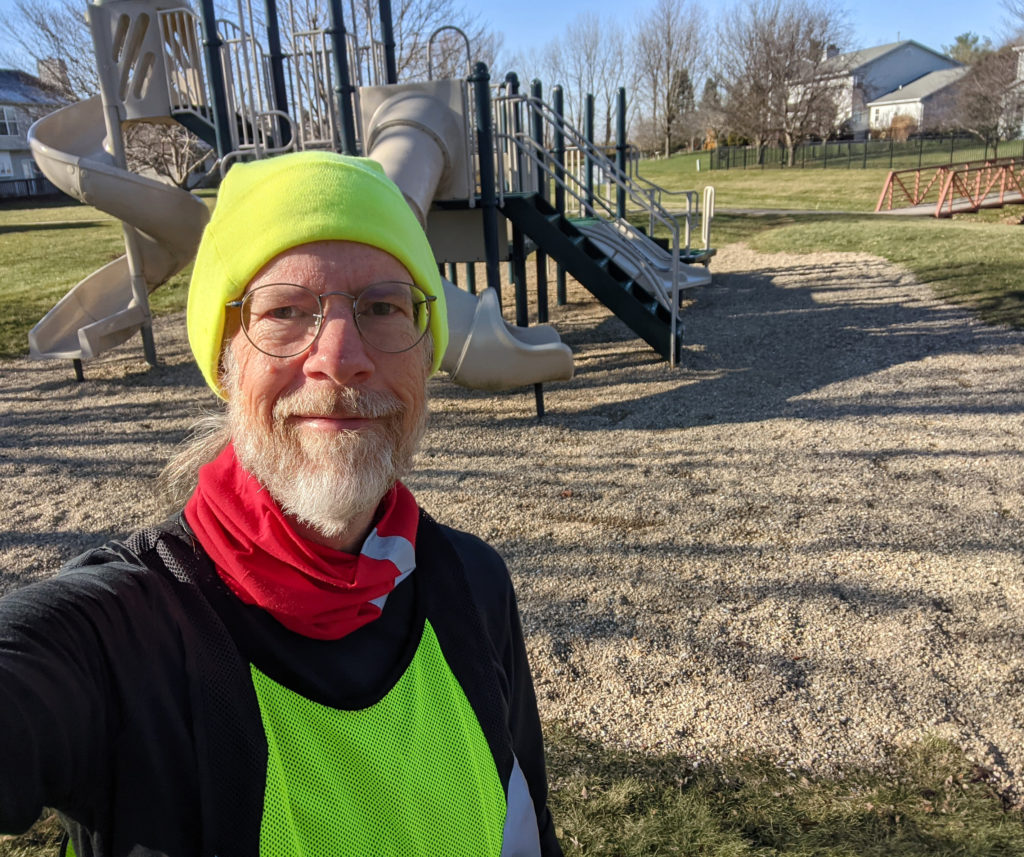
Only very old playgrounds still have monkey bars, jungle gyms, or pull-up bars. This modern playground at least has a horizontal bar at the top of the slides which is suitable for doing inverted rows. I took the opportunity of running past to do a quick set. 🏃🏻♂️
Exercise, movement, training
A few years ago I made a shift in my thinking about fitness—a shift from trying to get enough exercise to trying to fill my days with movement. I haven’t changed my mind about that being the right way to go, but this year, especially since the pandemic started, has seen me step back into exercise mode.

I still think movement trumps exercise. But during a pandemic the advantages of exercise have aligned better with my needs and my circumstances. (I’ve written previously about how our fitness room was closed and how I switched to working out with gymnastics rings instead.)
I have to say that it has turned out pretty well for me this year.
One thing about exercise is that it gives you a bunch of metrics you can track, and on the metrics I’ve done pretty well. At the beginning of the year I could do 3 pushups and now I can do 4 sets of 12. At the beginning of the year I could do zero pull ups, and now I can do a set of 3 followed by 2 sets of 2.
Having the metrics is great for someone like me who’s a big ol’ nerd about tracking that sort of data, but it’s not just a matter of numbers. Those bigger numbers correspond to real-world capabilities. I’m definitely stronger than I was at the beginning of the year, in all kinds of ways. I’m also leaner. (I have more muscle, plus I let myself lose about 5 pounds in a so-far vain effort to be able to see the abs I’ve built.)
A lot of my fitness goals are related to attaining and maintaining specific capabilities. I want to be able to:
- Pick something heavy up off the ground
- Take something heavy off a high shelf and lower it safely
- Clamber on top of a wall
- Jump down from a wall
- Jump over a ditch
- Run away from danger (or toward someone in need of help)
That’s not a comprehensive list; merely a brief sketch of the sort of things I want to be able to do.
Even a quick glance makes it clear that many of them are skill-based activities. I’ve worked on some of them before (click through the parkour tag to see six or seven years worth of reports about my efforts in those directions), but I felt that my efforts were limited by a lack of strength. That probably wasn’t even really true—parkour is scalable—but to the extent that it was true, it’s much less true now.
The way to get better at a skill-based activity is to practice it. And most of that practice should not be practicing whole activities, but rather individual pieces of them.
There’s a word that means practicing all the individual bits that go together to make a larger move: training—something that’s been really hard to do during the pandemic.
The real reason I’ve switched to exercise is that during the pandemic, although I’ve been able to move, my opportunities to train have been limited.
I’m hoping to spend the summer training. I’m thinking parkour, but if I can’t get it together to do that, maybe I’ll go with rock climbing. (Indoor climbing would be a great winter activity, if the vaccines roll out fast enough that I feel like it’s already safe to engage in indoor activity before summer weather. But there’s no rule against indoor climbing during the summer either.)
It’s possible to do parkour training during the winter, as long as it isn’t too icy. I tend not to get out in the cold or wet to do so, but I’m working on overcoming that—with some success: I’ve been doing pretty well at getting out for runs, even during chilly/damp fall weather. But I’m at the point where I could really use some instruction in parkour, and that’s out-of-bounds during the pandemic.
In the meantime, I’ll go on doing my exercise, figuring it’s the best way to get myself ready for training, once circumstances align.

